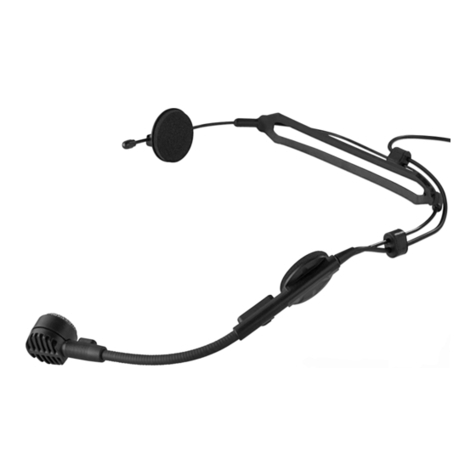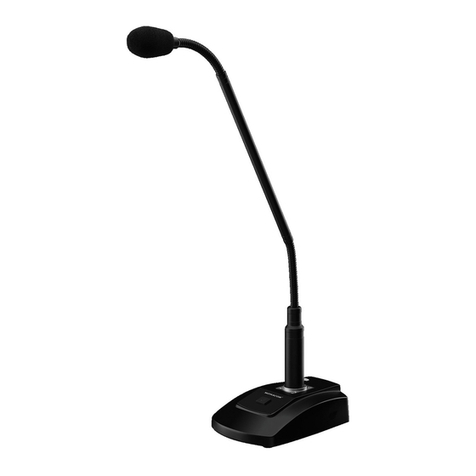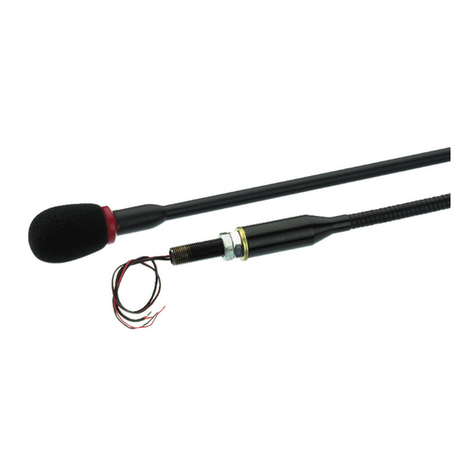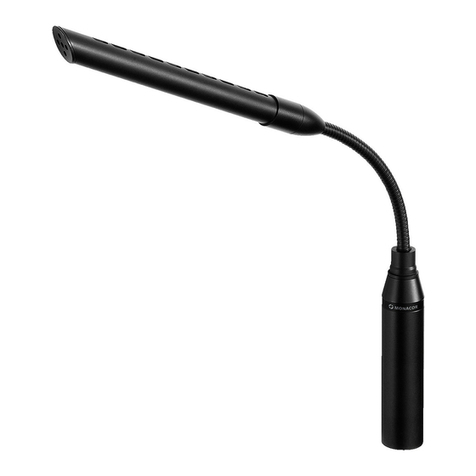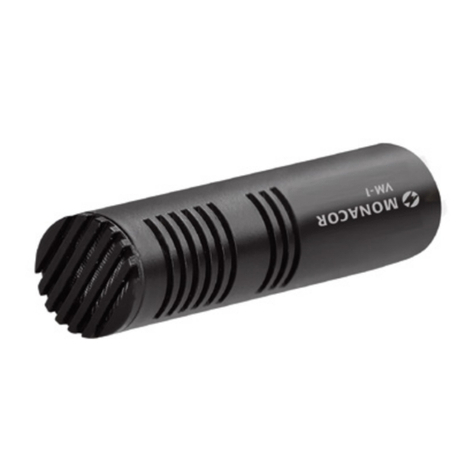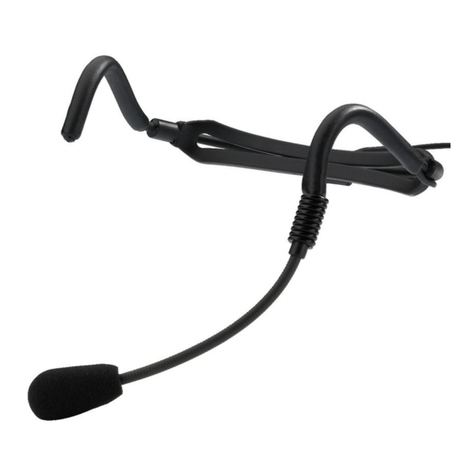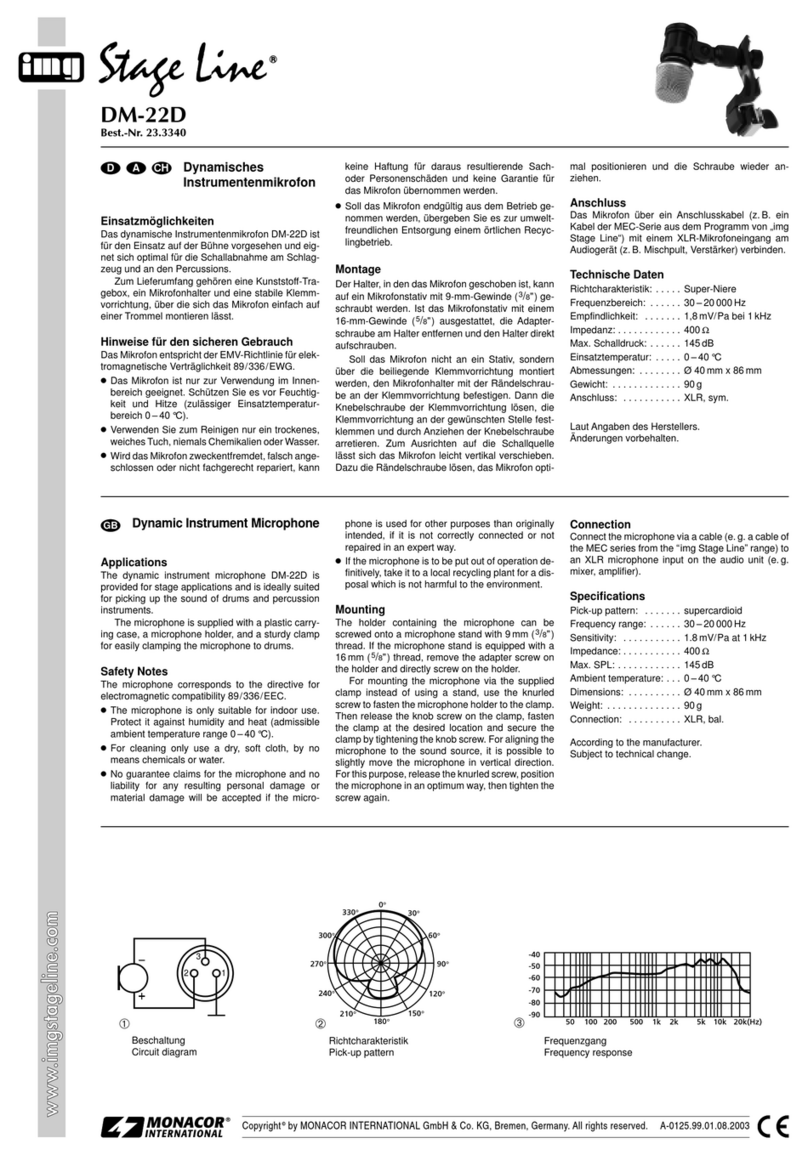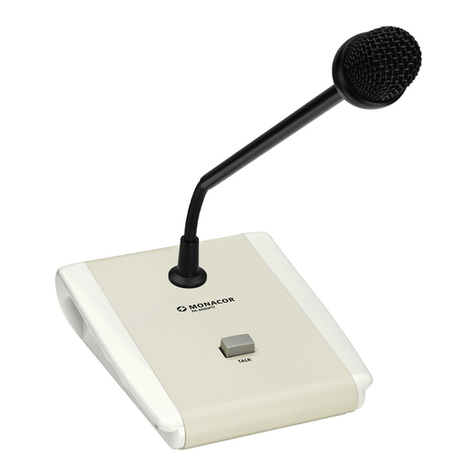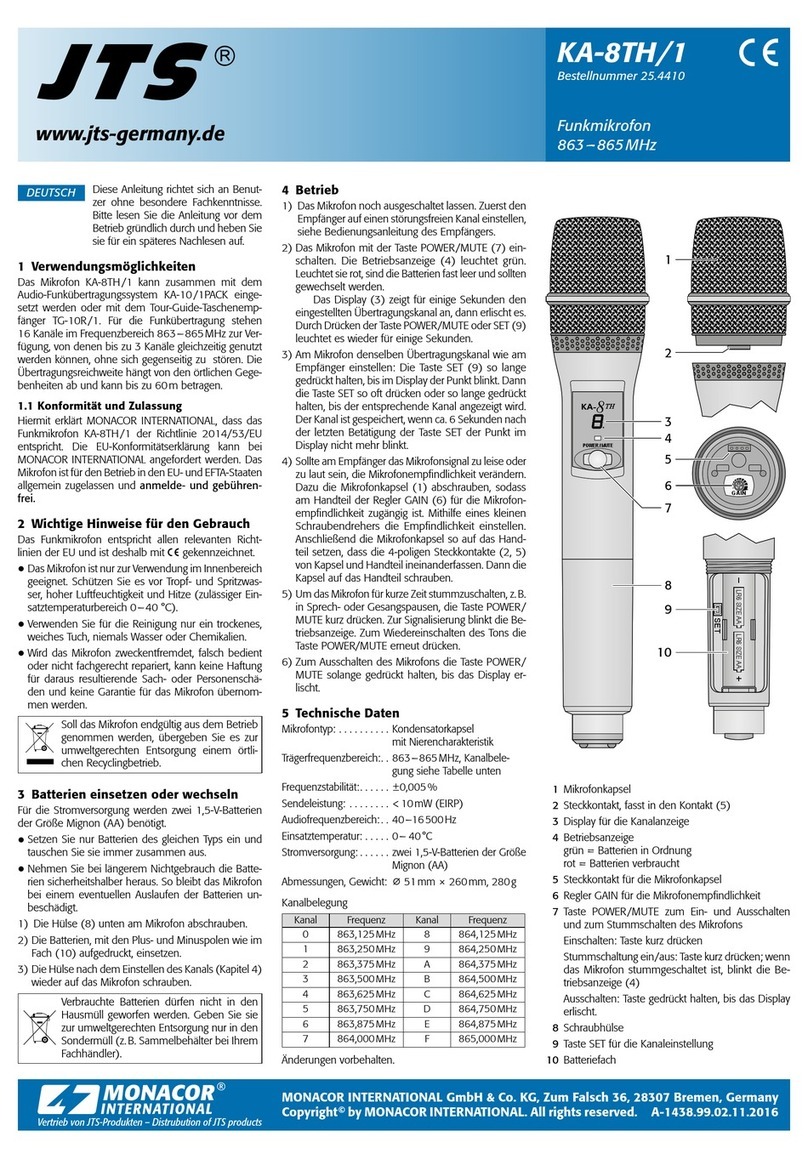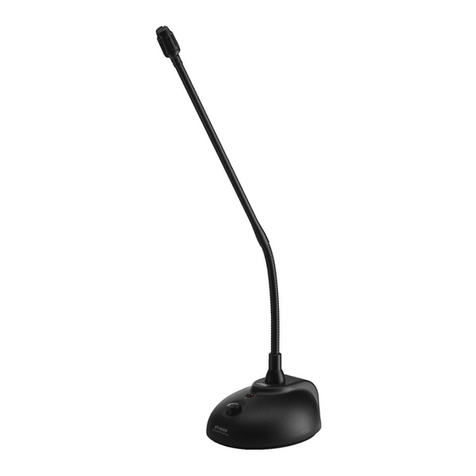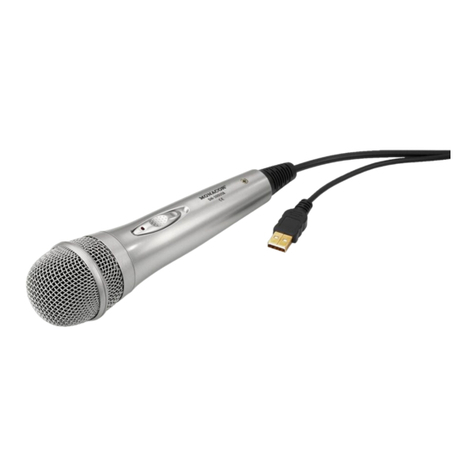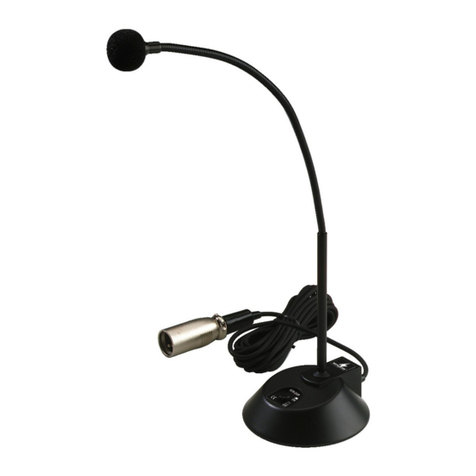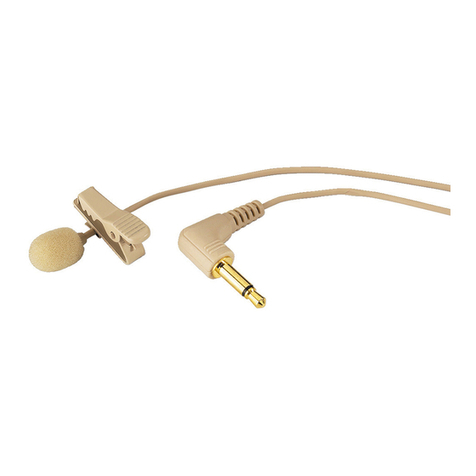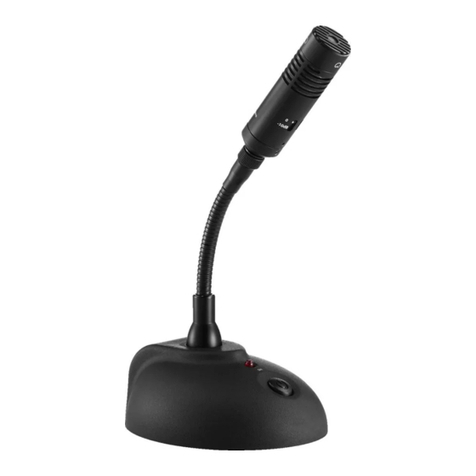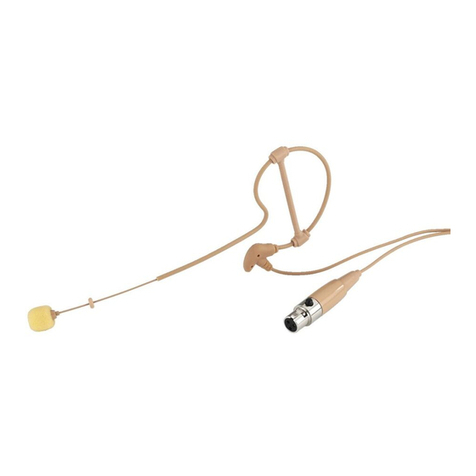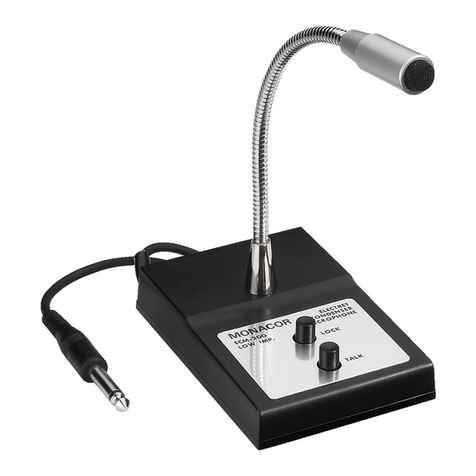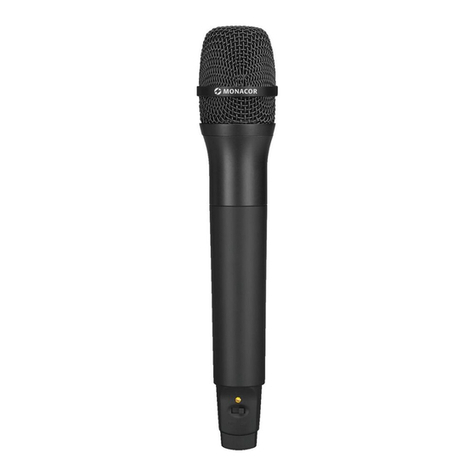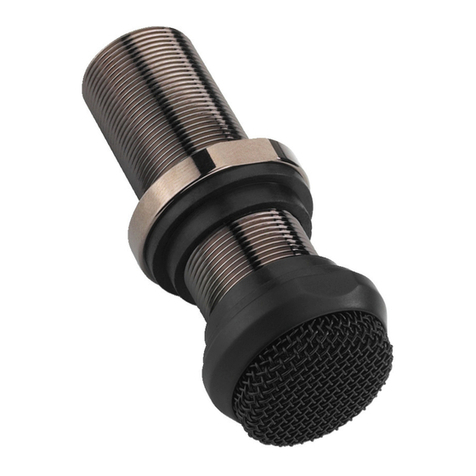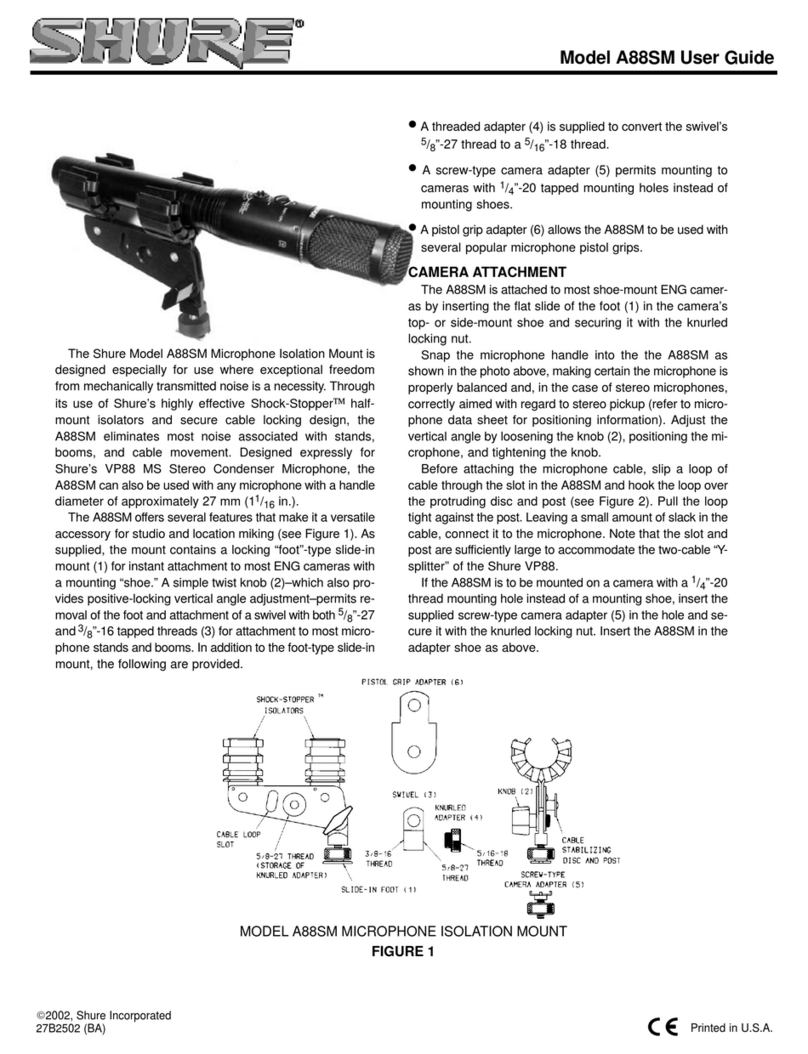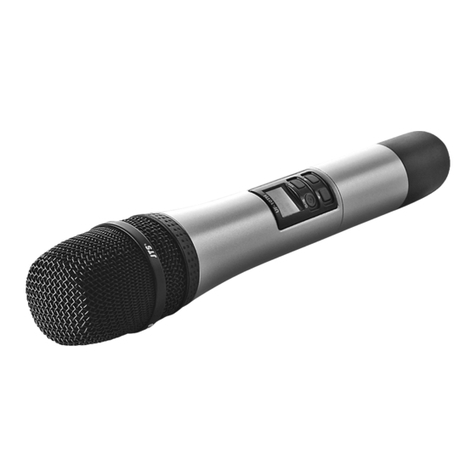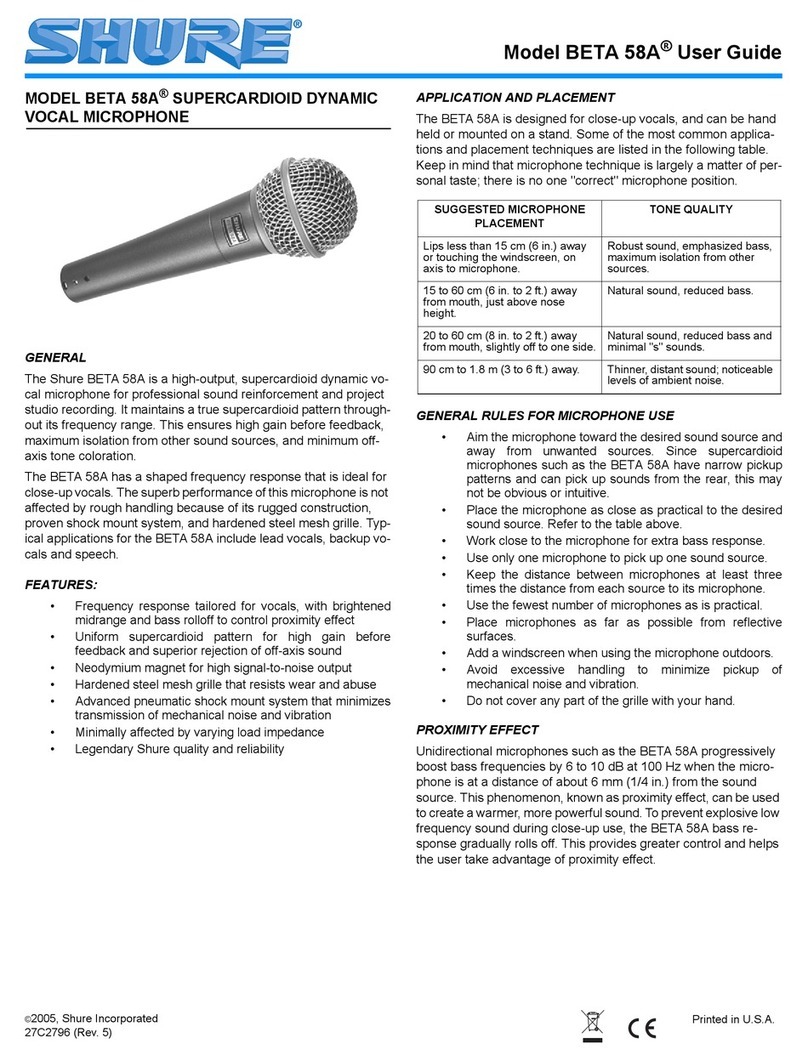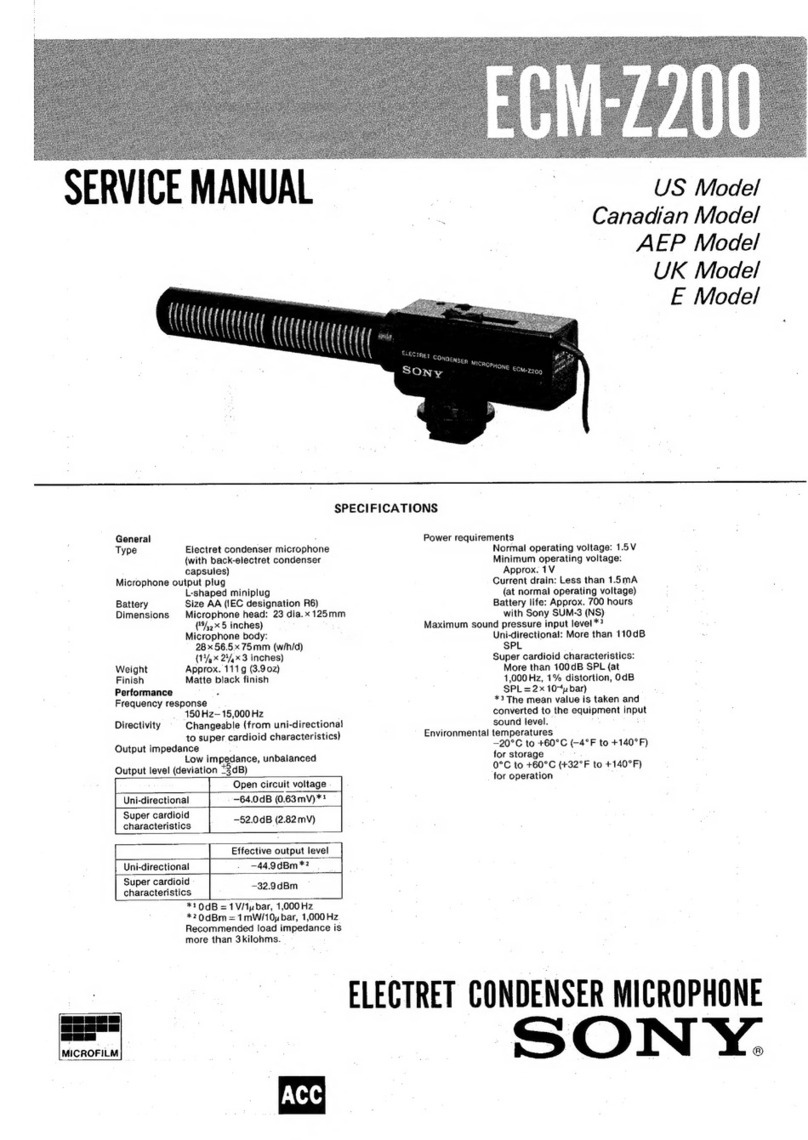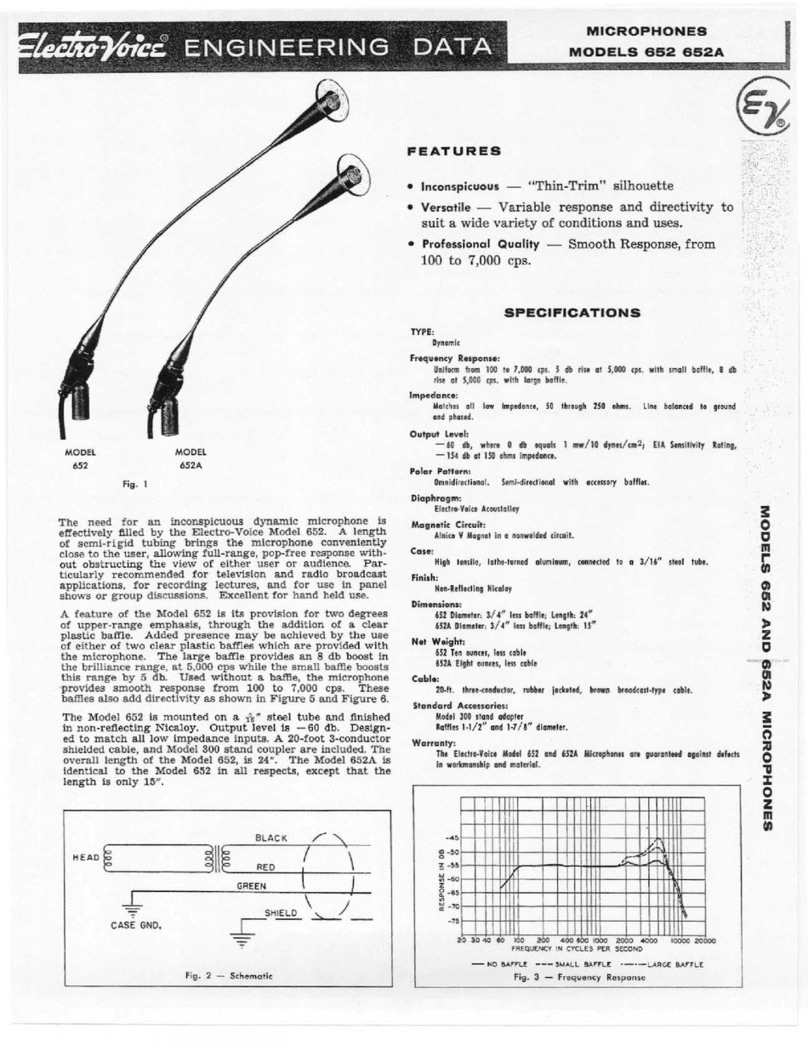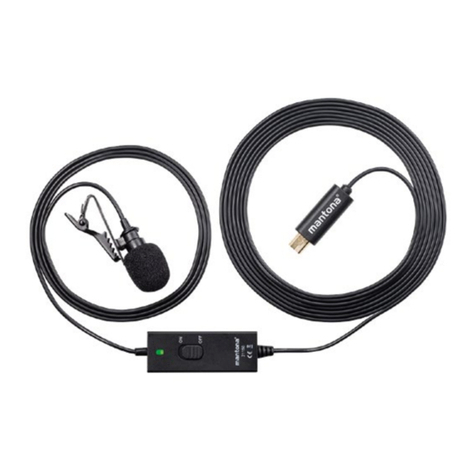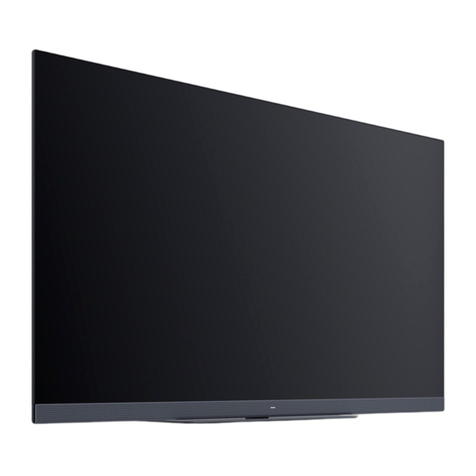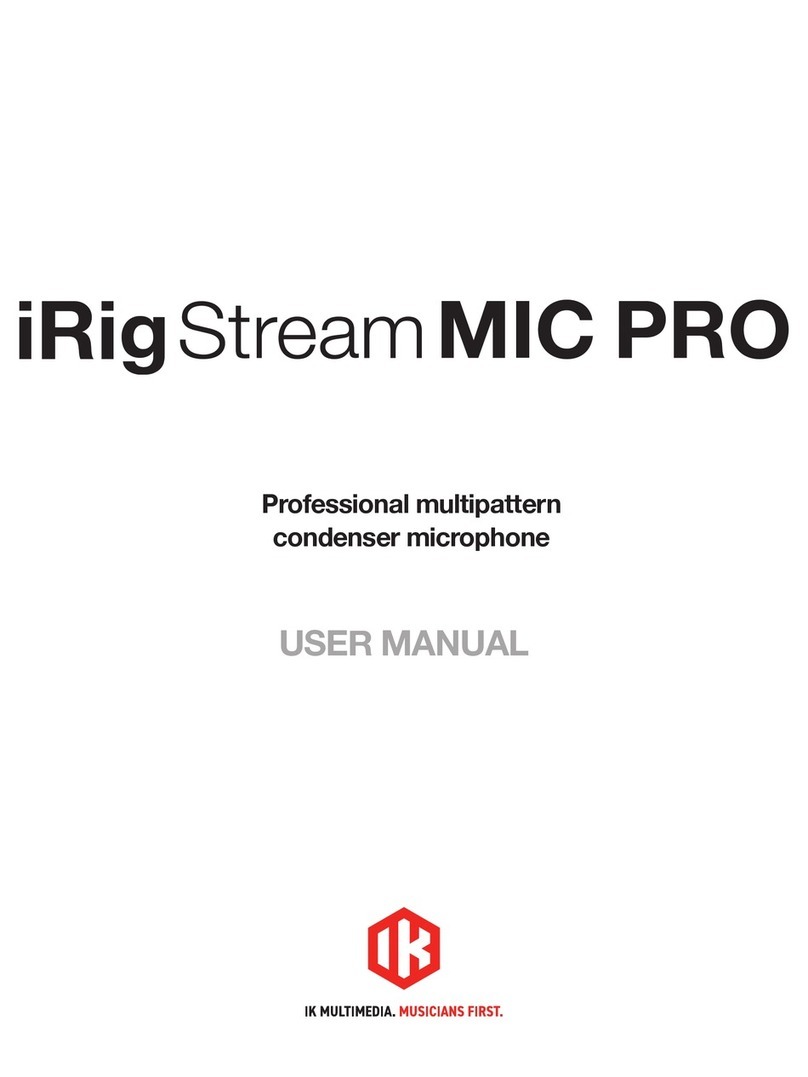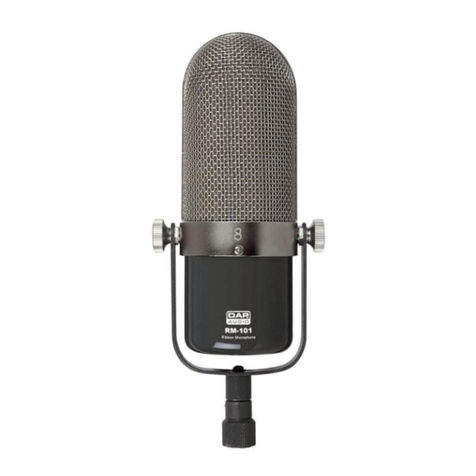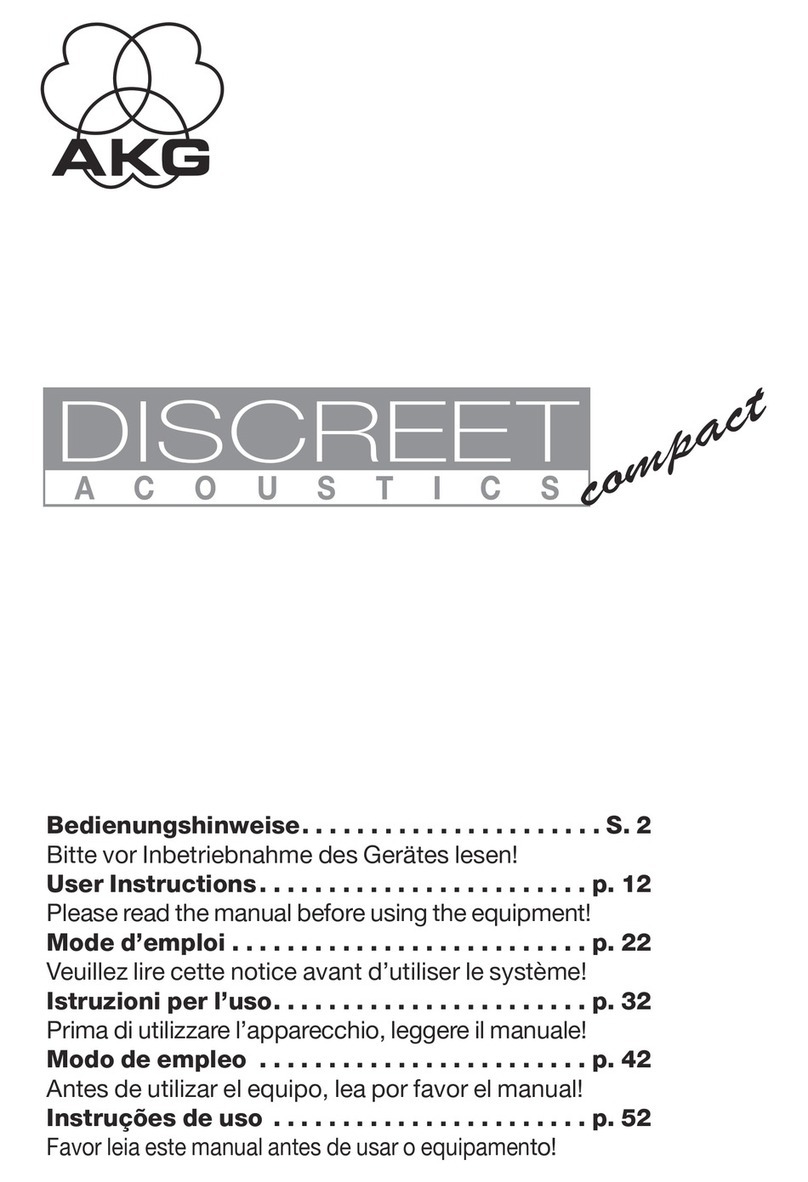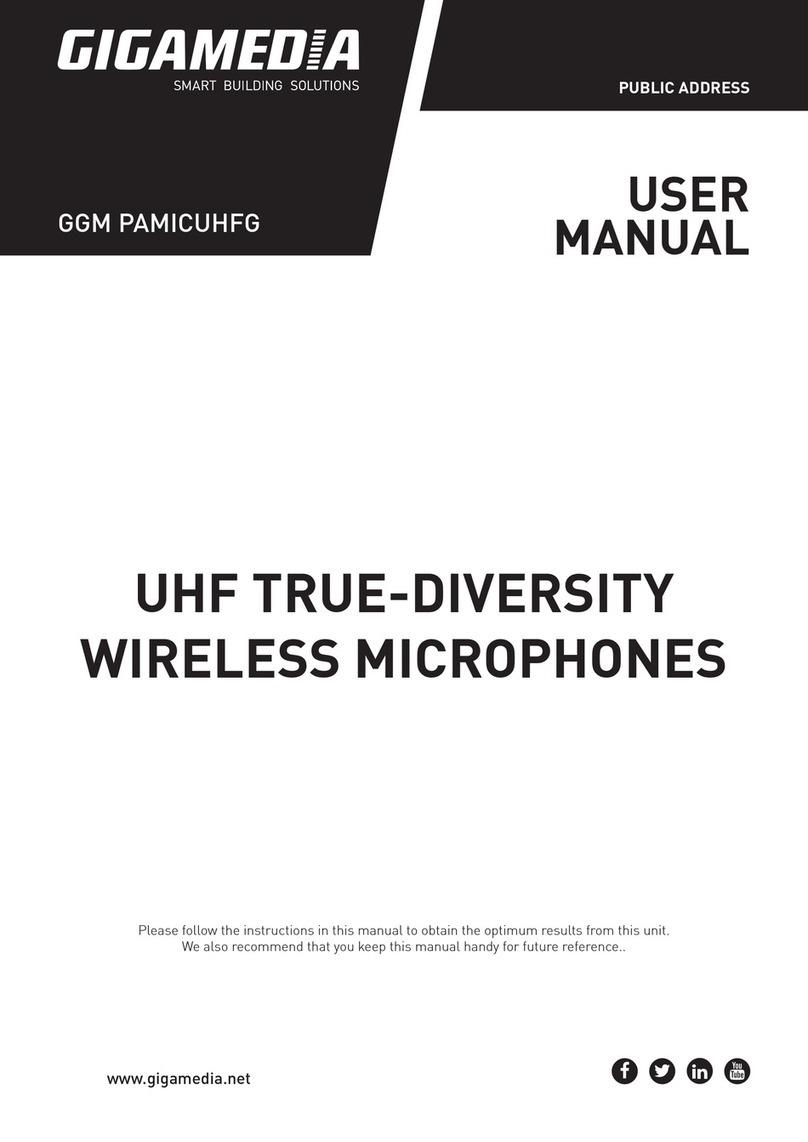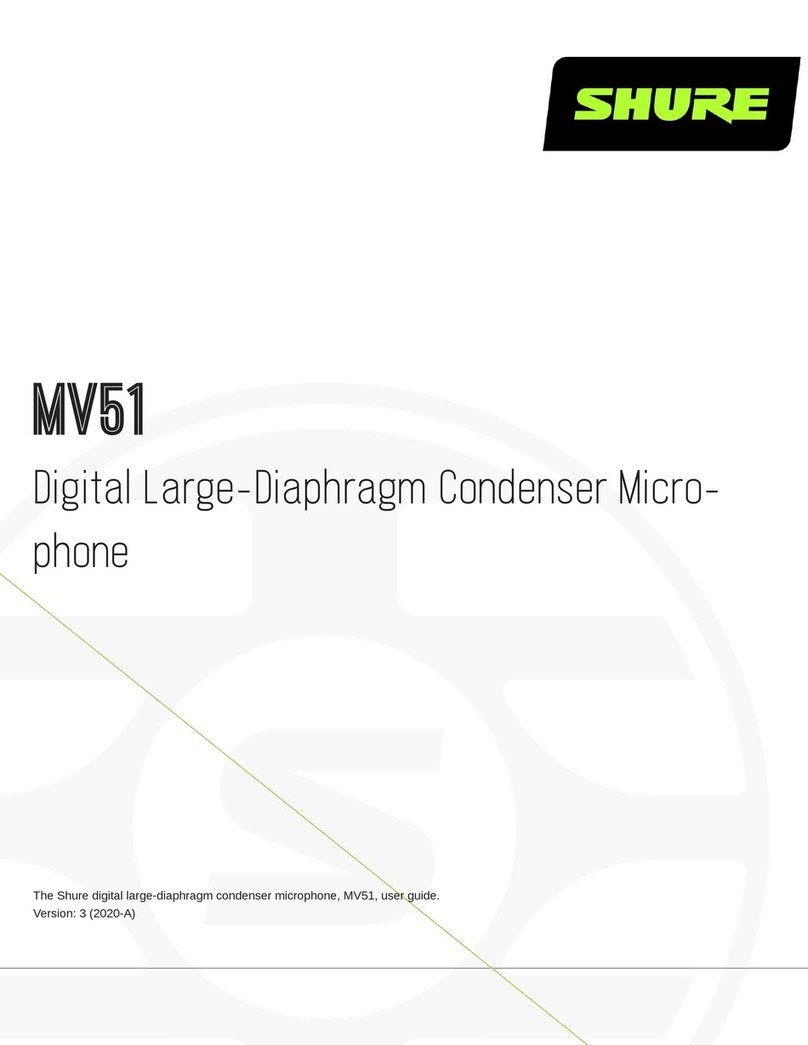Microphone sur
col de cygne
Veuillez lire la présente notice avec atten-
tion avant le fonctionnement et conser-
vez-la pour pouvoir vous y reporter ulté-
rieurement.
1 Possibilités dʼutilisation
Ce microphone sur col de cygne est spécialement
conçu pour une utilisation dans des systèmes PA
ainsi que pour dʼautres utilisations requérant un
microphone fixe pour des annonces, des discours
ou dʼautres transmissions de la voix.
Le micro reçoit la tension dʼalimentation né-
cessaire pour le fonctionnement via lʼappareil
audio relié : lʼentrée micro sur lʼappareil audio doit
disposer dʼune alimentation fantôme 9 – 48 V .
2 Conseils dʼutilisation
Le microphone répond à toutes les directives né-
cessaires de lʼUnion Européenne et porte donc le
symbole .
GLe microphone nʼest conçu que pour une utili-
sation en intérieur. Protégez-le de tout type de
projections dʼeau, des éclaboussures, dʼune hu-
midité élevée et de la chaleur (plage de tempé-
rature de fonctionnement autorisée : 0 – 40 °C).
GPour le nettoyer, utilisez un chiffon sec et doux,
en aucun cas de produits chimiques ou dʼeau.
GNous déclinons toute responsabilité en cas de
dégâts consécutifs et de dommages consécutifs
sur les personnes si le microphone est utilisé
dans un but autre que celui pour lequel il a été
conçu, s'il n'est pas correctement branché ou
réparé par un technicien habilité ; en outre, la
garantie deviendrait caduque.
3 Fonctionnement
1) Fixez le microphone sur une entrée micro XLR
symétrique de lʼappareil audio (par exemple
table de mixage, amplificateur) ; lʼentrée micro
doit être dotée dʼune alimentation fantôme
9 – 48 V , sinon le fonctionnement micro nʼest
pas possible.
2) Dirigez le col de cygne comme souhaité.
3) Dès que la tension de fonctionnement sera ap-
pliquée au microphone, lʼanneau rouge sʼallu-
mera, et le microphone sera prêt à être mis en
service.
Lorsque le microphone est définitivement
retiré du marché, vous devez le déposer
dans une usine de recyclage de proximité
pour contribuer à son élimination non pol-
luante.
4 Caractéristiques techniques
Type : . . . . . . . . . . . . microphone électret
Caractéristique : . . . . cardioïde
Bande passante : . . . 50 – 16 000 Hz
Sensitivité : . . . . . . . . 4 mV/ Pa à 1 kHz
Impédance : . . . . . . . 300 Ω
Alimentation : . . . . . . alimentation fantôme
9 – 48 V
Température de
fonctionnnement : . . . 0 – 40 °C
Branchement : . . . . . . XLR à 3 pôles, sym.
Dimensions : . . . . . . . ∅13/19 mm × 440 mm
Poids : . . . . . . . . . . . . 175 g
Tout droit de modification réservé.
Microfono a collo di cigno
Vi preghiamo di leggere attentamente le presenti
istruzioni prima della messa in funzione e di con-
servarle per un uso futuro.
1 Possibilità dʼimpiego
Questo microfono a collo di cigno è stato realiz-
zato specialmente per lʼimpiego in impianti PA e
per quei casi in cui è richiesto un microfono fisso
per avvisi, conferenze e simili.
La tensione di alimentazione viene dallʼappa-
recchio audio collegato; ciò significa che lʼingresso
microfono dellʼapparecchio audio devʼessere equi-
paggiato con alimentazione phantom (9 – 48 V ).
Avvertenze di sicurezza
Il microfono è conforme a tutte le direttive rilevanti
dellʼUE e pertanto porta la sigla .
GUsare il microfono solo allʼinterno di locali e pro-
teggerlo dallʼacqua gocciolante e dagli spruzzi
dʼacqua, da alta umidità dellʼaria e dal calore
(temperatura dʼimpiego ammessa fra 0 e 40 °C).
GPer la pulizia usare solo un panno morbido,
asciutto; non impiegare in nessun caso prodotti
chimici o acqua.
GNel caso di uso improprio, di collegamento sba-
gliato o di riparazione non a regola dʼarte non si
assume nessuna responsa-bilità per eventuali
danni a persone o a cose.
3 Messa in funzione
1) Inserire il microfono in un ingresso micro XLR
simmetrico dellʼapparecchio audio (p. es.
mixer, amplificatore). Lʼingresso microfono
deve essere equipaggiato con unʼalimenta-
zione phantom 9 – 48 V . Altrimenti il microfono
non può funzionare.
2) Orientare il collo di cigno secondo conve-
nienza.
3) Non appena la tensione dʼesercizio è presente
sul microfono, lʼanello rosso si accende e il mi-
crofono è pronto per lʼuso.
Se si desidera eliminare il microfono defi-
nitivamente, consegnarlo per lo smalti-
mento ad unʼistituzione locale per il rici-
claggio ecologico.
4 Dati tecnici
Tipo: . . . . . . . . . . . . . microfono allʼelettrete
Caratteristica: . . . . . . a cardioide
Banda passante: . . . . 50 – 16 000 Hz
Sensibilità: . . . . . . . . . 4 mV/ Pa a 1 kHz
Impedenza: . . . . . . . . 300 Ω
Alimentazione: . . . . . . alimentazione phantom
9 – 48 V
Temperatura
dʼimpiego: . . . . . . . . . 0 – 40 °C
Collegamento: . . . . . . XLR a 3 poli, simm.
Dimensioni: . . . . . . . . ∅13/19 mm × 440 mm
Peso: . . . . . . . . . . . . . 175 g
Con riserva di modifiche tecniche.
EMG-648P Best.-Nr. 23.3250
F
B
CH
I
MONACOR INTERNATIONAL GmbH & Co. KG • Zum Falsch 36 • 28307 Bremen • Germany
Copyright©by MONACOR INTERNATIONAL. All rights reserved. A-0087.99.02.06.2011
®
